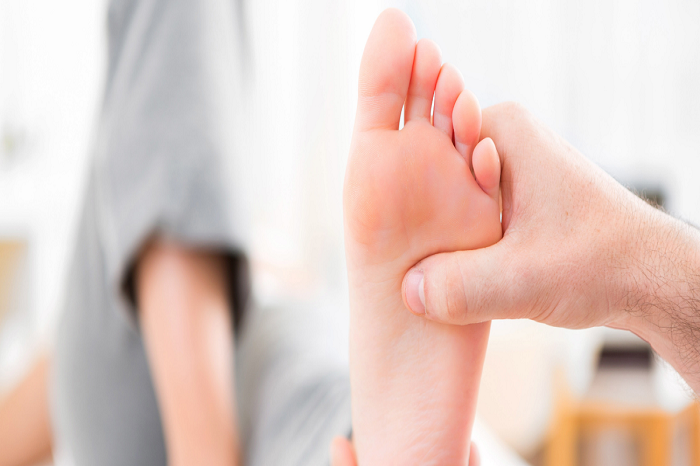Your mobility may be significantly impacted by foot issues, limiting your ability to carry out daily activities and lead an active lifestyle. Finding the appropriate treatment is crucial if you have plantar fasciitis, Achilles tendonitis, or any other foot-related problem.
At FYZICAL Berkeley Heights in Berkeley Heights, New Jersey, people with foot issues can get professional advice and individualized treatment regimens. However, why is physical therapy so crucial for foot issues? Let’s look at how important a part it plays in healing.
Restores Range of Motion
Table of Contents
Limited mobility in the ankles, toes, and arches can contribute to many foot problems. Physical therapists use stretching, joint mobilization, and myofascial release to improve range of motion.
For example, gentle motions and supported stretches can decrease stiffness from plantar fasciitis. Manual therapy also loosens tight ligaments, tendons, and muscles around the foot and ankle.
Increasing flexibility and mobility alleviates pain and allows you to move and walk more freely. Your physical therapist will show you stretches to continue improving motion at home between sessions. Regaining an optimal range of motion is critical for putting your feet and ankles through their full function.
Strengthens Muscles
Weak foot and ankle muscles can lead to poor support of the arches. This allows structures like the plantar fascia to become overstressed and inflamed. Your physical therapist will prescribe targeted strengthening exercises using resistance bands, small weights, or your own body weight.
Properly strengthening the intrinsic and extrinsic foot muscles and the muscles of the lower leg helps distribute forces more evenly across the feet. This provides better shock absorption and stability during gait. It also allows the feet’ various bones, joints, and soft tissues to move and work together more effectively.
Improves Balance and Stability
Balance and coordination issues can arise from foot conditions such as bunions, neuromas, and arthritis. Physical therapists can re-train the proprioceptive system with special techniques and exercises. Simple balance challenges on unstable surfaces help improve stability and posture.
This leads to better distribution of pressure across the foot, preventing excessive load on sensitive areas. Your therapist may also tape or brace weak joints to encourage proper foot alignment and biomechanics. As balance and stability improve, the risk of re-injury decreases.
Relieves Inflammation and Pain
Various modalities are used physical therapy Berkeley Heights to reduce inflammation and discomfort in the feet. Ice, heat packs, ultrasound, and electrical stimulation help ease symptoms from conditions like plantar fasciitis, capsulitis, and arthritis. Hands-on soft tissue massage can also alleviate pain associated with plantar fascia strain, Achilles tendinitis, and diabetic neuropathy.
Your therapist may use gentle joint mobilization and traction techniques to take pressure off nerves and provide pain relief. Patients often report an immediate decrease in foot pain after modalities and manual therapy from a physical therapist.
Corrects Biomechanical Faults
Abnormal foot structure or improper movement patterns can lead to painful conditions like shin splints, heel spurs, and stress fractures. Physical therapists perform gait analyses to identify any biomechanical faults. They may watch you walk barefoot and in various shoe types.
Your therapist can then recommend foot orthotics, taping, bracing, or exercises to correct biomechanical issues. Improving the way your feet, ankles, and legs bear weight relieves strain on areas vulnerable to overuse injuries. With a physical therapist’s guidance, you can break bad movement habits contributing to foot pain.
Provides Footwear and Offloading
Your physical therapist may recommend proper athletic shoes, custom orthotics, or specialty footwear. Orthotics support the arches to reduce overpronation, which can aggravate plantar fasciitis. Cushioned shoes with rigid soles stabilize feet with ligament laxity or overflexibility issues.
Offloading techniques are used to protect injured areas and prevent complications. Padding, taping, and foam wedges redistribute pressure away from bunions, corns, and diabetic foot ulcers. Your therapist can ensure you have optimal footwear and devices to allow healing while remaining active.
Patient Education
Physical therapists act as educators to help you self-manage foot conditions on a daily basis. You’ll learn about anatomy, pathology, and the mechanics behind your specific foot problem. Therapists give advice on proper warm-up, activity modification, supportive footwear, and home care.
For example, icing protocols and stretching routines will be demonstrated following ankle sprains. Or you may be instructed on bunion splinting, padding, and exercises if undergoing conservative bunion treatment. Patient education ensures you can continue making progress between therapy visits.
Conclusion
While drugs and surgery are sometimes necessary, physical therapy is considered a safe first-line treatment option for most foot problems. The customized combination of modalities, mobilization, therapeutic exercises, and gait training can significantly relieve pain and restore normal foot function.
If you want a tailored Foot Therapy Berkeley Heights, contact FYZICAL Berkeley Heights in Berkeley Heights, NJ. Don’t let a foot ailment or pain stop you. Without the hazards of drugs or intrusive procedures, physical therapy frequently offers an effective answer. Take a step towards a pain-free, active life by visiting their website or getting in touch to make an appointment.







